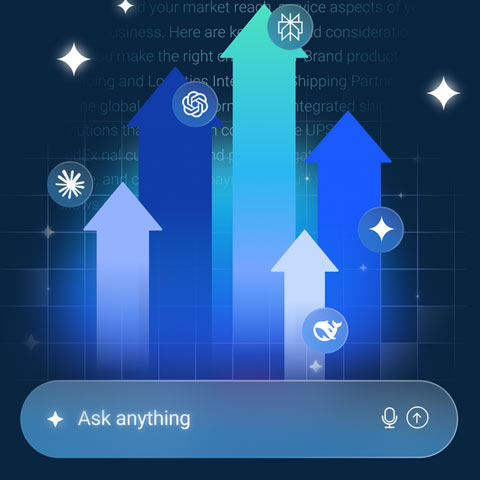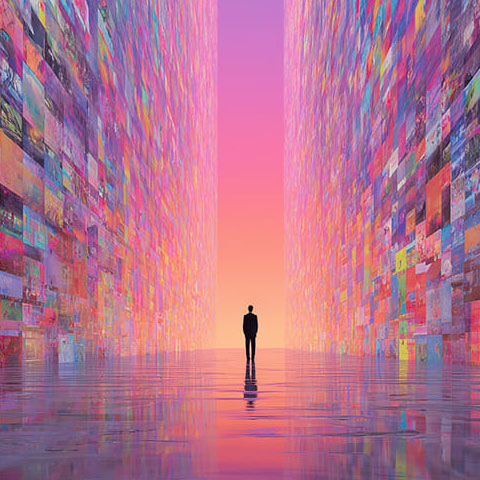The Future of Agency Operations

Today’s creative industry has changed considerably during the last decade and has become so complex that it has been coined the ‘new normal’ – an environment where it’s tough, and keeps getting tougher, to make a buck and a great idea. This puts increased pressure on all areas of the business to combat new challenges while ensuring creativity remains the bastion of the industry.
In particular, all members of your creative and operations teams have to be skilled multi-taskers, juggling several projects on the go. However, with the demand to get more done, increase productivity, embrace new technologies, deliver more value and return on investment (ROI) to the client, and still deliver projects within time and budget restrictions, it is easy to feel overwhelmed at the expense of this creativity.
So how do agencies tackle this challenge? How do they build a productive and successful team? What tools and resources do they use? And most importantly, how do they create a harmonious balance between enabling ground-breaking creative and exceptional delivery?
Download this paper to find out.
Get the downloadBelow is an excerpt of "The Future of Agency Operations". To get your free download, and unlimited access to the whole of bizibl.com, simply log in or join free. |

|
Retaining Good Talent
There has been a lot of chatter about attracting and retaining talent within the marcoms industry and this roundtable sought to explore the concept of talent retention in more detail.
The general agreement was that managing work / life balance is key in helping to nurture and grow loyalty. Not only should individuals be working towards professional goals but they will have personal goals in mind which agency management should be supportive of. When working with teams, management should be looking at specific initiatives that will help employees succeed both professionally and personally.
The onus was also placed on management to send the right message to teams – “do your best job when you’re in the office and then go home and relax – this is what should be coming down from the top.” In an environment where agencies are criticised for their working styles and weekend warriors are the norm, one participant shared an anecdote about once being asked if they were a lifestyle company rather than an agency because they didn’t want teams working late or weekends. It is this mindset that needs to change – agencies need to have a mantra of work smarter, not harder.
Another way to retain talent and build strong teams is to remove the three problem emotions of ego, lack of trust and fear. With accountability and ownership of ideas in the hands of individuals, sometimes ego and fear can lead the way when working with others or handing over ideas. This in turn highlights a lack of trust which then can cause issues within the workflow process. It’s the role of management to try and break down these barriers between teams and foster an environment of co-creation and collaboration.
Industry leaders say:
- Don’t monitor your staff like children – create a flexible workplace where the emphasis is placed on getting the job done rather than the hours worked
- Timesheets should be used to monitor billing and overspend, not to check up on your team
- Needs to be a top down process – make sure management teams are sending the right message
Structuring an Agency for Success
According to some, shrinkage in production and execution has been common place within agencies and the last bastion standing is the people profit line. With commercial challenges increasing the pressure on staff, it has become increasingly obvious that the method and process of the creative system hasn’t changed but the industry has.
This is one reason that agencies find themselves under such threat from consultancies – consultancies are not afraid to work in different ways and have different models which agencies would do well to review and in some cases, mimic. The current ‘waterfall’ model is no longer working and agencies need to move towards a more agile approach to reflect the current landscape.
We work in a very fractured way. We need to look at how projects have life beyond a traditional campaign, particularly on the product and software side and the traditional way of working does not, at all, allow for that way of working.
We have been trying to make account management and creatives or producers a dual role, particularly on smaller projects, because our clients are asking why they are paying for all these layers. So for example, the project manager can be the CS person.
As the roundtable participants discussed how the model could become more agile, Mother was referenced with its innovative decision to remove all account managers, allowing creatives to have direct relationships with the clients. Additionally, the group agreed that smaller agencies tend to get it more than the larger agencies, which is perhaps a reflection of the agility of smaller agencies.
Ultimately though, changing your agency workflow is about people. Finding those people who are multi-skilled, or have the potential to step outside a siloed role and expand into roles as job descriptions evolve. Nirvana is someone with both creative and strategic skill but those people can be hard to find, so it is important agencies think laterally and help people become more well-rounded – on both a professional and personal level.
Industry leaders say:
- It’s important to have a blend of people and skills that you can dial up and down as required
- Think of your people’s skills as a T shape – there is the primary job role but that can be stretched and pulled out to cover other areas of the business
- Industry players should to be talking to creative schools and universities to try and influence the skills coming into the industry and into the pipeline
Want more like this?
Want more like this?
Insight delivered to your inbox
Keep up to date with our free email. Hand picked whitepapers and posts from our blog, as well as exclusive videos and webinar invitations keep our Users one step ahead.
By clicking 'SIGN UP', you agree to our Terms of Use and Privacy Policy


By clicking 'SIGN UP', you agree to our Terms of Use and Privacy Policy
Agency Thinking
The big idea used to be king of the agency – does it have the same influence now? The group all agreed that the term big idea no longer only referred to the ideas showcased at Cannes but rather a clever idea that addressed an issue – whether it was tactical or strategic. To that, all ideas are big ideas.
We have a lot of problems with people thinking the stuff for mobile should be a small idea because it is a small screen. But really it just needs to be an idea – of any size.
What the group did agree on though is that agencies still need to include a ‘wow’ idea in pitches, if only as a sales tool. It’s what clients remember and most importantly, the part they share.
When you pitch, the clients still want to see your creativity – that can come out within the technology or through a great overarching concept, but they want to see something other than strategy and figures. We did a pitch earlier this year and I left out the creative bit because the brief was prescriptive with what they wanted and creative ideas wasn’t included. We lost the pitch because of that – even though they would never have done it, they still wanted to see the wow factor to buy into us.
I always think of it as the thing, when they go home from the pitch, they tell their wife or husband.
Industry leaders say:
- The industry can get hung up on wording – focus on solving a problem and the ideas themselves, not what you are going to call it
- Remember that creativity is what agencies are known for, if it’s not asked for in the pitch or response – put it in anyway – it helps you stand out
- Creativity can be displayed in many ways; it’s not always Cannes style creativity. The right strategy can be creative if it is shaped in the right way
The role of diversity in agency
Stepping back to look at teams and diversity came up as an important factor. The group spoke about how diversity needs to be a conscious effort within the agency and industry because history shows it won’t just happen. It needs to be diversity in every sense of the word too – gender, race, sexuality and everything in between.
Looking at gender diversity specifically, agencies often find it difficult to get women rising through the ranks without dropping out on the way. This can be for any number of reasons, including but not limited to, confidence.
The group discussed ways to promote and foster a confidence building approach to management. From a creative perspective, it can be deeply personal to put your ideas out there only to have them stamped on by a senior manager or client. As such – it was suggested that instead of identifying problems, agencies build up ideas from a single positive. There were varying levels of agreement around this and it was noted that from a technical standpoint sometimes issues needed to be highlighted and corrected, but on a whole, the approach should be build up not break down. This was particularly relevant, the group agreed, with women who perhaps did not have the natural confidence that comes with being a man in ad land.
Something else that was also addressed and is particularly applicable for the United Kingdom, is diversity of class. In an environment such as marcoms where difference breeds creativity, it is important to acknowledge the alternative perspectives held by those around you, regardless of their exposure to all aspects of life.
Industry leaders say:
- Diversity is now a commercial decision and should be at the heart of every idea
- It is everyone’s responsibility, from management to interns, to try and resolve the issues around diversity at all levels of the business
- Everyone has something to offer – unconscious bias is killing equal opportunity
Technology to the rescue?
Yes and no. Technology has the ability to automate and smooth over some operational processes which in turn, enables teams to have some more headspace to tackle issues such as diversity and company culture.
For example, a good agency management system will remove the headache that more often than not appears from dealing with operational issues such as capacity and resource planning, financial management and timesheets. This is done by providing better insight into how an agency operates – understanding how it comes together, where your people are the most valuable and productive, and where your profit will come from. Being able to access this level of insight and data can then drive strategic decision making, as well as assisting from a baseline execution level with meeting deadlines and ensuring teams are resourced appropriately.
For example, from a designer’s perspective, a good agency management system will make timesheets effortless – managing their days with a simple graphical interface so they are not bogged down with admin and instead have time to focus on being more creative.
Likewise, from an operations perspective, it will allow the resource manager to have an always-on understanding of the agency capacity, track work in progress, assign resources and ensure work is delivered on time and to budget. By automating a lot of these processes and empowering teams – it frees people up to think about other aspects of the business, which is where the likes of diversity and culture come into it. You can’t necessarily solve those challenges with technology but it can go a long way in supporting the process.
Want more like this?
Want more like this?
Insight delivered to your inbox
Keep up to date with our free email. Hand picked whitepapers and posts from our blog, as well as exclusive videos and webinar invitations keep our Users one step ahead.
By clicking 'SIGN UP', you agree to our Terms of Use and Privacy Policy


By clicking 'SIGN UP', you agree to our Terms of Use and Privacy Policy









